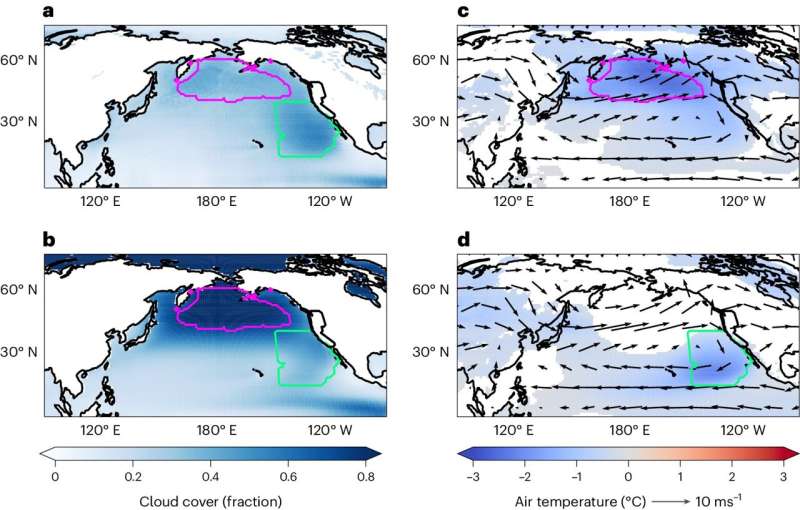June 25, 2024 report
This article has been reviewed according to Science X's editorial process and policies. Editors have highlighted the following attributes while ensuring the content's credibility:
fact-checked
peer-reviewed publication
trusted source
proofread
Marine cloud brightening models show unexpected consequences of geoengineering

A combined team of Earth scientists and climate specialists at the University of California San Diego and the National Center for Atmospheric Research has found via modeling that geoengineering projects such as marine cloud brightening can have unexpected and sometimes harmful consequences.
In their study, published in the journal Nature Climate Change, the group designed models to predict what might happen if large-scale marine cloud brightening projects were undertaken in two major regions in the western United States.
Prior research has shown that unless greenhouse gas emissions are reduced and a way is found to reduce the amount of greenhouse gasses already in the atmosphere, dramatic climate changes will result. In recent years, scientists have found it unlikely that such goals will be met and have been looking for other solutions.
One proposed solution is geoengineering to reduce the amount of heat that makes its way into the atmosphere. One such approach is called marine cloud brightening (MCB), which involves injecting massive amounts of sea salt into the lower atmosphere to serve as tiny mirrors, bouncing heat and light from the sun back out into space.
For this new study, the researchers investigated how this might work for one part of the world and to model the potential impacts.
The work involved configuring established climate models to show what would happen if artificial stratocumulus clouds were created under two different scenarios, both over the North Pacific: one over the temperate latitudes and the other over sub-tropical waters. Under both scenarios, the artificial clouds were generated and maintained for nine months every year for 30 years.
The researchers found that the artificial clouds would reduce temperatures in the western U.S., primarily California—reducing risk of dangerously high temperatures by as much as 55%. But they also found the same clouds would reduce rainfall amounts, both in the U.S. and other parts of the world.
The research team also found that if the MCB project continued to the year 2050, its benefits would taper off and heat waves in Europe would become much more common, showing that engineering projects can lead to unforeseen consequences in other parts of the world.
More information: Jessica S. Wan et al, Diminished efficacy of regional marine cloud brightening in a warmer world, Nature Climate Change (2024). DOI: 10.1038/s41558-024-02046-7
Journal information: Nature Climate Change
© 2024 Science X Network




















